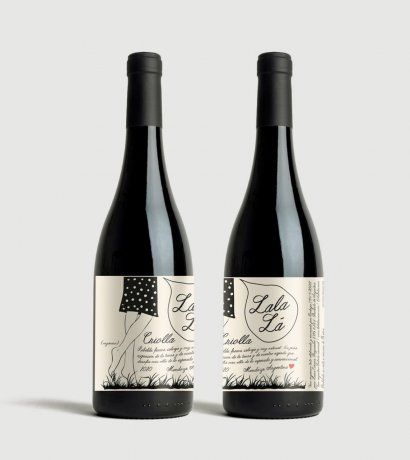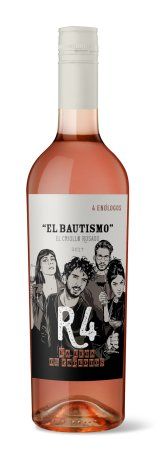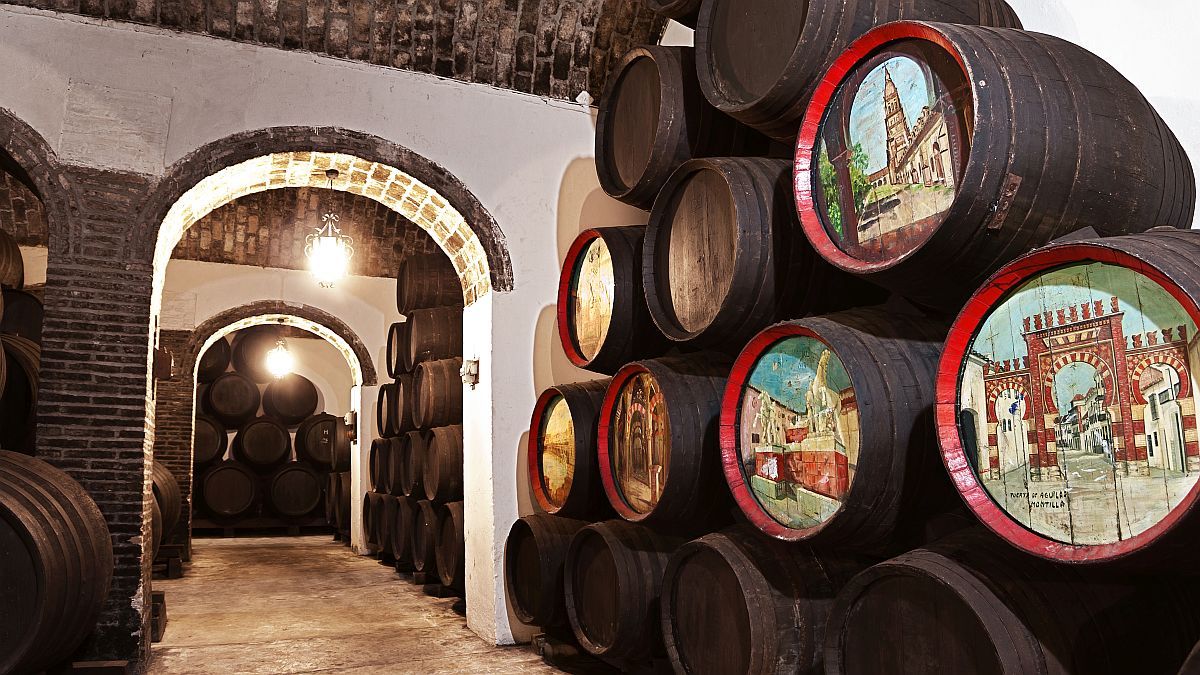In a work between the private sector and INTA, around 60 varietals of creole grapes have been selected that they have “oenological aptitudes to make good wines”, mentions Niven, who explains that the intention is to certify them as heritage and ancestral varieties.
“Focusing on the Creole as part of this cultural rescue, to return to the idea of village wine, to recover the identity of each place”, says Pablo Durigutti, who, together with his brother Héctor, commands the Las Compuertas Project in Mendoza.
Creole strains spread throughout the wine region, and thus They appear under that umbrella, for example, the Riojan torrontés, Cuza de Criolla Chica with Moscatel de Alejandría. “In La Rioja we have a very dry climate and in ancient times the irrigation was traditionally with surface water that came from the mountains. This meant that in drought years water was scarce and that many vines that were planted did not tolerate this lack of water and died or vegetated very little. Therefore, their yields were not as expected, which is why our ancestors selected this natural cross, “he says. Javier Collovati, winemaker at the Valle de La Puerta winery. “In those years of water scarcity and, therefore, of concentration of salts in the soil, the Torrontés plants were not so affected, so this caused the rapid spread of this variety throughout the north, without to know at that time that it was a unique variety typical of Argentina ”, he added.
Here are six wine options to enter the world of the Creole strain:
The natural sweet door
Winery: Valle de La Puerta
Origin: Famatina Valley, La Rioja
Price: $ 638
the creole door.jpeg
The Torrontés Riojano emblematic strain par excellence of La Rioja, is the second most planted white grape in Argentina and the only one that comes with a national seal since it is a variety that is born in the country of the cross between Criolla Chica (Listán Prieto in Spain ) and Muscat of Alexandria.
“There are more floral torrontés, which are the ones that are left to ripen the longest, which are closer to 14% alcohol degrees. Those below have more citrus and fruity aromas. There are also other varieties with vegetal notes that are achieved with the elaboration techniques. Torrontés is a world to discover ”, says Javier Collovati, the winery’s winemaker. “It goes without saying that due to the sun that the grapes receive in La Rioja, this variety provides excellent wines, with unique and powerful aromas,” he added. Along these lines, the winery has three emblems: La Puerta classic, a dry white; La Puerta Alta, more elegant; and the natural sweet, highlighted in these lines.
To make this last wine, after pressing, the resulting juice is cooled and pumped into a stainless steel tank, keeping it at a very low temperature. Then the juice is inoculated with cultured yeasts to proceed to a slow fermentation and controlled temperature. Through a centrifuge system, the yeasts are eliminated, achieving in a natural way to cut the fermentation, leaving the wine with a low alcohol content and high residual sugar. It is a very aromatic wine in which the notes of orange blossoms, rue and tropical fruits such as mango, pineapple and peach stand out, interspersed with citrus notes of lime and mandarin, and a touch of honey. With a pale yellow tone with steely reflections and well balanced, it reaches the mouth with sweetness and just the right acidity. The fruity notes stand out, with good volume and persistence on the palate.
El Esteco Old Vines Criolla
Winery: El Esteco
Origin: Cafayate, Salta
Price: $ 2,246
Old Vines Criolla.jpg

From the hand of the winemaker of Bodega El Esteco, Alejandro Pepa, this Salta Creole is possibly one of the most awarded of all the 100% of the varietal. “On our Las Mercedes estate you can find some criolla vines over 60 years old intermingled in a plot dominated by vineyards in Torrontés. It is a tribute to the life and trajectory of some of our vineyards with more than 60 years old. Vineyards that live in harmony with the Cafayatean terroir and require minimal human intervention to give us exceptional wines ”, said Pepa.
To make this wine, each of the plants to be harvested are marked and selected. Once its optimum point of maturity is reached, the fruits are manually harvested first thing in the morning in boxes of 18 kg each and are quickly transported to the winery to begin the production process. In the winery, the grapes go through a selection belt. The pre-fermentation maceration is carried out in 3,000-liter ovoid vessels for 5 days and then the alcoholic fermentation begins. The wine is bottled without any type of previous filtration and remains stored for the next 6 to 8 months.
Intense pink color with violet tones and slight ruby edges, it has the presence of slight fine lees in suspension, similar to a Pinot Noir. With a fruity aroma, it is a refreshing wine with a mineral texture.
The Creole Gate Project
Winery: Durigutti
Origin: Las Compuertas, Luján de Cuyo, Mendoza
Price: $ 1,400
Creole durigutti.jpeg

Héctor and Pablo Durigutti began in 2002 with this personal and family project. In 2017 they launched the Las Compuertas Project, which is in full asset recovery in the Luján de Cuyo area, in Mendoza, with a revaluation in the area. “This Criolla is born from Las Compuertas, until the 2020 harvest, which is the current one in circulation in the market, we call it Criolla Parral. The new vintage that is about to be presented, 2021, has a small change, since it is with a Creole grape called Gobelet and it is 100% planted by us ”, explains Pablo Durigutti.
With manual harvesting in 18 kg boxes, the reception in the cellar is carried out in cement eggs with whole grains. With cold maceration for 4 days at 10 ° C, the alcoholic fermentation begins as red wine (liquid and grain) at temperatures between 15-17 ° C with epoxy yeasts. Halfway through the process, the skins are separated and fermentation continues as if it were a white wine at temperatures between 13-14 ° C. It is an elegant, floral and spicy wine, with flavors of rose petals and pudding. summer, graceful and fine-grained tannins. It is recommended to drink it fresh, at a temperature between 12 and 14 ° C. “It is a 100% organic, certified, and vegan-friendly wine. It was very well received internationally, it is exported with good recognition ”, adds Durigutti.
The winery is also working on another Criolla project with cherry grapes from the Rivadavia area, for another line of wines, Cara Sucia, for a consumer looking for lighter wines.
Lalalá
Winery: Lalalá
Origin: Tupungato, Uco Valley, Mendoza
Price: $ 1,600
lalala criolla.jpeg

“Our wines are carefully made with organic grapes from vineyards over 45 years old in Tupungato, Valle de Uco,” says Laura Ciacera, producer from Lalalá, who has been in the world of wine for more than 20 years. This certified organic project for 5 years has been carried out together with the winemaker Leo Borsi. “Lalalá criolla, was born as a differential challenge within the line, resulting in a very fruity, elegant wine with a wild touch. The idea is to show the consumer that it is possible to elaborate and enjoy a Creole grape wine with elegance ”, adds Ciacera, about this organic certificate of limited batch of 8500 bottles. This wine, 95% Creole- 5% Malbec, is hand-harvested, with a discovery according to the lunar calendar. It is a frank, fresh and fruity wine.
Creole Argentina Ink
Winery: Niven
Origin: Junín, Mendoza
Price: $ 660
creole level.jpeg

This wine is born from centenary vines and vineyards, with organic production, with varieties in which the Criolla Grande predominates and others, such as Sanjuanina Tinta. “We have two farms that are over 80 years old and we own Criolla Chica Blanca, Pedro Giménez, Moscatel blanco y rosa, Cereza, Criolla Grande, Canela, among others. It is a wide world that we are still analyzing ”, says Lucas Niven, the winery’s winemaker.
“The ones we call reds, which are really rosy varietals, are cinnamon, criolla chica and criolla grande, with bleeding techniques in vinification and a good maceration, they reach colors like Pinot Noir wines. They are aromatic wines, easy to drink, fresh, setting the world trend in wines ”, says the winemaker.
With manual harvesting, fermentation is carried out with native yeasts in concrete vessels. The wine contains sulphites and is filtered before bottling. It does not contain any clarifier of animal origin, so it is suitable for vegans, vegetarians and celiacs.
Red in color with low intensity, on the nose there are notes of red fruits and herbs, caramel, tuti fruti. On the palate it is light and fresh with medium acidity, with tannins present in the middle of the mouth. Came very
Creole Baptism
Winery: The League of Winemakers
Origin: Mendoza, eastern and central zone.
Price: $ 442.50
Creole Baptism.png

With an excellent price-quality ratio, it is one of the most appropriate options to begin to appreciate the Creole grape and, why not, the best expression of the national tradition with the freshness that only a grape gives that finds its best version in the harvest. early. A rosé easy to find in the gondola, it is always to drink with its very expressive, tasty character, with an ideal acidity that helps to whet the appetite with a bite, just to start with the previous one and even to make it longer since the La Liga winemakers made it to have it on the fries and to drink it very fresh.
“La Criolla is a highly productive grape variety historically destined to produce wines for cuts. At La Liga de Enologists we broke the rules and treated the Criolla as if she were a ‘princess’, with all the care and high-end production methods. The result, a wine with a pleasant color, fruity aromas and fresh on the palate, ”says Fernando Sirerol, one of the winery’s oenologists.
With this label, the League seeks to redeem the Criolla variety, native to our country, and to recognize the first winemakers who made wine from this strain. With pink skin, it gives the wine an elegant bright cherry color. Its floral and fruity aroma is reminiscent of roses and strawberries. On the palate it is fresh, light and with balanced acidity.
Source From: Ambito
David William is a talented author who has made a name for himself in the world of writing. He is a professional author who writes on a wide range of topics, from general interest to opinion news. David is currently working as a writer at 24 hours worlds where he brings his unique perspective and in-depth research to his articles, making them both informative and engaging.




